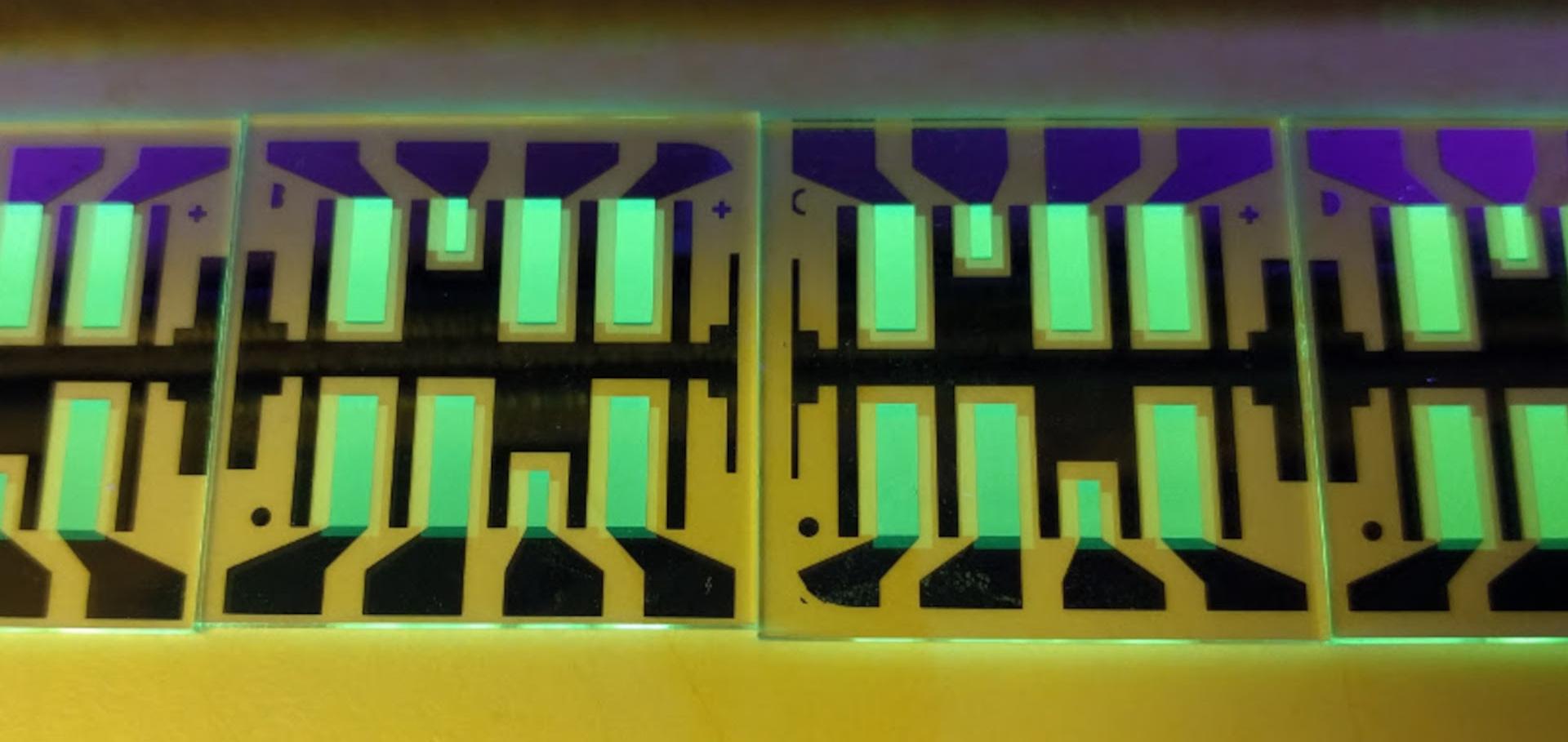Improving performance of fully scalable, flexible transparent conductive films made from carbon nanotubes and ethylene-vinyl acetate
Energy Reports Elsevier 8:S11 (2022) 48-60
Abstract:
We report process improvements for the fabrication of single-walled carbon nanotube ethylene-vinyl acetate transparent conductive films. CNT:EVA films demonstrate high resilience against folding and can replace the external dopant in a spiro-OMeTAD based hole selective contact of n-i-p perovskite solar cells achieving a steady-state efficiency of 16.3%. The adapted process is fully scalable, and compared to previous reports (Mazzotta et al., 2018) lowers the material cost dramatically and improves DC to optical conductivity ratio by two orders of magnitude to σdc/σop = 3.6 for pristine and σdc/σop = 15 for chemically doped films. We analyse the microstructure of our films via small angle neutron scattering and find a positive correlation between the long range packing density of the CNT:EVA films and the σdc/σop performance. Increasing monomer ratio and chain length of the EVA polymer improves resilience against bending strain, whereas no significant effect on the CNT wrapping and electrical conductivity of resulting films is found.Geminate and Nongeminate Pathways for Triplet Exciton Formation in Organic Solar Cells
Advanced Energy Materials Wiley (2022) 2103944-2103944
Interfacial rearrangements and strain evolution in the thin film growth of ZnPc on glass
Physical Review Materials American Physical Society 6:3 (2022) 33401
Abstract:
We report on the characterization of the growth of vacuum-deposited zinc phthalocyanine (ZnPc) thin films on glass through a combination of in situ grazing incidence x-ray scattering, x-ray reflectivity, and atomic force microscopy. We found that the growth at room temperature proceeds via the formation of two structurally unique substrate-induced interfacial layers, followed by the growth of the γ -ZnPc polymorph thereafter (thickness ≈ 1.0 nm). As the growth of the bulk γ -ZnPc progresses, a substantial out-of-plane lattice strain ( ≈ 15 % relative to γ -ZnPc powder) is continually relaxed during the thin film growth. The rate of strain relaxation was slowed after a thickness of ≈ 13 nm, corresponding to the transition from layer growth to island growth. The findings reveal the real-time microstructural evolution of ZnPc and highlight the importance of substrate-induced strain on thin film growth.Charge transfer state characterization and voltage losses of organic solar cells
JOURNAL OF PHYSICS-MATERIALS IOP Publishing 5:2 (2022) 24002
Abstract:
<jats:title>Abstract</jats:title> <jats:p>A correct determination of voltage losses is crucial for the development of organic solar cells (OSCs) with improved performance. This requires an in-depth understanding of the properties of interfacial charge transfer (CT) states, which not only set the upper limit for the open-circuit voltage of a system, but also govern radiative and non-radiative recombination processes. Over the last decade, different approaches have emerged to classify voltage losses in OSCs that rely on a generic detailed balance approach or additionally include CT state parameters that are specific to OSCs. In the latter case, a correct determination of CT state properties is paramount. In this work, we summarize the different frameworks used today to calculate voltage losses and provide an in-depth discussion of the currently most important models used to characterize CT state properties from absorption and emission data of organic thin films and solar cells. We also address practical concerns during the data recording, analysis, and fitting process. Departing from the classical two-state Marcus theory approach, we discuss the importance of quantized molecular vibrations and energetic hybridization effects in organic donor-acceptor systems with the goal to providing the reader with a detailed understanding of when each model is most appropriate.</jats:p>Properties and Applications of Copper(I) Thiocyanate Hole-Transport Interlayers Processed from Different Solvents
Advanced Electronic Materials (2022)


